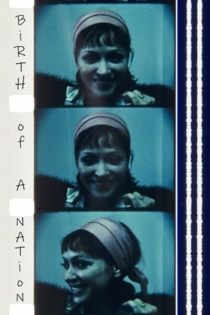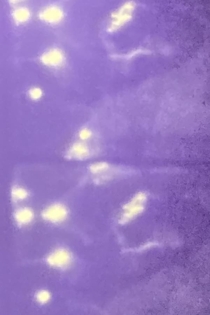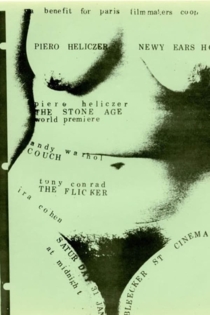
Piero Heliczer
1937 - 1993Homeo
Étienne O'Leary
Michèle Giraud, Yves Beneyton
Homeo is a mental construction made from visual reality, just as music is made from auditive reality. I put in this film no personal intentions. All my intentions are personal. I’ve made this film thinking of what the audience would have liked to see, not something specific that I wanted to say: what the film depicts is above all reality, not fiction. Homeo is, for me, the search for an autonomous cinematographic language, which doesn't owe anything to traditional narrative, or maybe everything. Cinema is, above all, part of a way of life which will become more and more self-assured in the years and century to come. We are part of this change, and that’s why I tried in Homeo to establish a series of perpetual changes, in constant evolution or regress, which tries, above all, to focus on things.
Homeo

Bengasi
Augusto Genina
Fosco Giachetti, Mária Tasnádi Fekete
The film is set in 1941 during the Second World War, when the city of Benghazi in Italian-ruled Libya was occupied by British forces. Italian inhabitants of Benghazi work to resist the British and discover their military plans. One man, Captain Enrico Berti, appears to be collaborating with the British but is in fact working undercover for Italian intelligence. The film ends with the city being recaptured by Italian troops and their Nazi German allies.
Bengasi
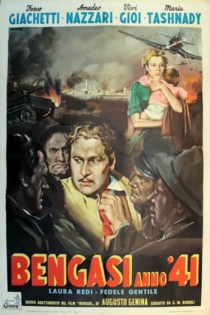
The Autumn Feast
Jeff Keen, Piero Heliczer
Piero Heliczer, Kate Heliczer
A deliberately non-synchronous film, shot in 8mm with the sound on tape. Piero Heliczer reads his poem "The Autumn Feast," and the visuals interact with, but does not literally represent, what is read.
The Autumn Feast
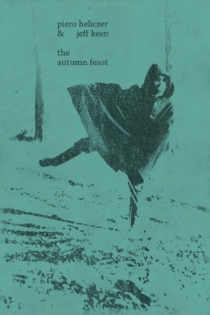
No President
Jack Smith
Mario Montez, Piero Heliczer
Smith's third feature film was originally titled "The Kidnapping of Wendell Willkie by the Love Bandit," in reaction to the 1968 Presidential Campaign. It mixes B&W footage of Smith's creatures with old campaign footage of Willkie, a liberal Republican who ran against FDR in the 1940's. The climax of the work appears to be the "auctioning" of the presidential candidate at a convention.
No President

Couch
Andy Warhol
Bingingham Birdie, Rufus Collins
The couch at Andy Warhol's Factory was as famous in its own right as any of his Superstars. In Couch, visitors to the Factory were invited to "perform" on camera, seated on the old couch. Their many acts-both lascivious and mundane-are documented in a film that has come to be regarded as one of the most notorious of Warhol's early works. Across the course of the film we encounter such figures as poets Allen Ginsberg and Gregory Corso, the writer Jack Kerouac, and perennial New York figure Taylor Mead.
Couch

Flaming Creatures
Jack Smith
Francis Francine, Sheila Bick
Filmmaker and artist Jack Smith described his own film as a “comedy set in a haunted movie studio.” Flaming Creatures begins humorously enough with several men and women, mostly of indeterminate gender, vamping it up in front of the camera and participating in a mock advertisement for an indelible, heart-shaped brand of lipstick. However, things take a dark, nightmarish turn when a transvestite chases, catches and begins molesting a woman. Soon, all of the titular “creatures” participate in a (mostly clothed) orgy that causes a massive earthquake. After the creatures are killed in the resulting chaos, a vampire dressed like an old Hollywood starlet rises from her coffin to resurrect the dead. All ends happily enough when the now undead creatures dance with each other, even though another orgy and earthquake loom over the end title card.
Flaming Creatures
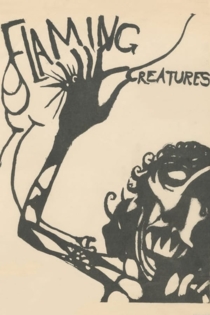
Andy Warhol Screen Tests
Andy Warhol
Eric Andersen, Paul America
The films were made between 1964 and 1966 at Warhol's Factory studio in New York City. Subjects were captured in stark relief by a strong key light, and filmed by Warhol with his stationary 16mm Bolex camera on silent, black and white, 100-foot rolls of film at 24 frames per second. The resulting two-and-a-half-minute film reels were then screened in 'slow motion' at 16 frames per second.
Andy Warhol Screen Tests
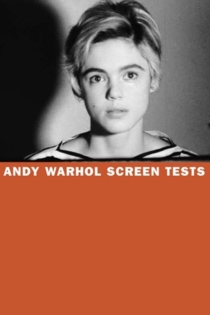
The Making of an Underground Film
Piero Heliczer, Lou Reed
CBS bit on Piero Heliczer shooting his film 'Venus in Furs' (they mistakenly call it 'Dirt'). Released by Boo-Hooray as part of their exhibit on Heliczer and The Dead Language Press. Features the earliest known footage of The Velvet Underground. Shots of Angus MacLise on percussion, a bit of Heliczer on sax, interview segments with Jonas Mekas, Stan Brakhage (with a clip of a film he shot of Michael McClure) and Edie Segewick.
The Making of an Underground Film

